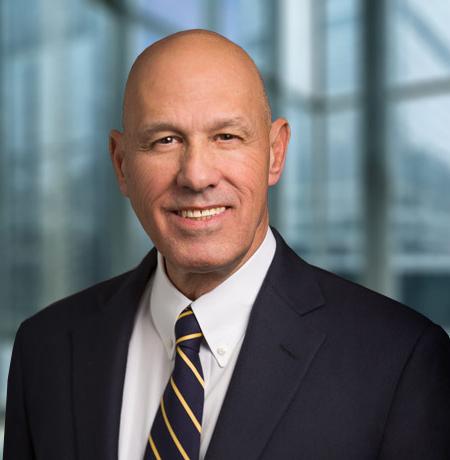Legacy healthcare organizations see innovation as a crucial path to staying relevant in a fast-changing world.
Innovation has the promise to solve longstanding problems with the healthcare system, and to move legacy organizations into a digital world and help them discover new revenue channels as volumes and payments from traditional channels soften. Adding to the momentum for innovation is the rise of competitors—from start-ups to tech giants—that have innovation in their DNA.
72% of larger hospitals and health systems have built
or are in the process of building innovation centers1
Structurally, hospital innovation programs range from projects or departments housed within a hospital, to subsidiary companies, to partnerships with tech companies. Traditionally, hospital innovation programs have focused on developing internal ideas to be used within the hospital to improve issues like operational efficiency or utilization management. In the face of new competition and rapid change, these programs increasingly develop and fund start-up companies aimed at selling new products to new markets.
As the need for innovation intensifies, so does the need for a new orientation toward innovation. The capabilities, culture, and mission that support ongoing operations of a legacy healthcare organization are not those that drive successful innovation. For innovation to generate ideas that become commercial successes, it must be backed by an entrepreneurial culture with characteristics that are different from—and even antithetical to—the characteristics of legacy organizations.
8 Characteristics of Entrepreneurial Leaders
An innovation center cannot simply be an add-on to the ongoing operations of a legacy healthcare organization. It must be rooted in a culture of entrepreneurialism, led by individuals who demonstrate eight critical characteristics.
1. Have really good ideas.
Breakthrough ideas are the foundation of a successful entrepreneur. Such ideas are transformational. They offer solutions to needs that may not even be previously recognized. They are the product of thinking differently about how important tasks can be done, and how important goals can be achieved. They open up new demand from the largest possible markets.
2. Work hard in a different way.
Legacy healthcare organizations are full of hard workers, but entrepreneurial organizations need people who work hard in a different way. In legacy organizations, people work hard at doing their best within existing workflows. In entrepreneurial organizations, people work hard at disrupting those workflows in search of something better. They will be relentless in asking questions, conceptualizing solutions, and making them successful.
3. Tolerate risk.
Healthcare organizations have a reputation for being averse to risk. They are not alone in this. All companies are subject to organizational forces and natural biases that make their leaders reluctant to take on risk. In contrast, innovation and entrepreneurialism are by definition about taking risks. They require leaders who can recognize these forces and biases, and move beyond them.
4. Persevere.
In part because legacy healthcare organizations tend to avoid risk, they have little experience with meeting unexpected problems or confronting failure. Instead, they develop processes and protocols designed to avoid failure. Surgical procedures, for example, can’t go bad because a surgeon wants to go down an unknown path that may or may not produce a better outcome for the patient. Entrepreneurial organizations encounter obstacles and outright failures regularly.
They need to develop perseverance as a business emotion
that enables them to get over obstacles and failures and keep going.
In 2014, when Amazon’s introduction of the Fire smartphone failed, Fortune magazine reported that the company “is now left scrambling, and it’s unclear whether it can recover from its flop.” Amazon persevered, recovered fully, and continues to grow.
5. Feel a sense of urgency.
Because hospitals want to be careful, methodical, and tactical, they don’t want to rush. Entrepreneurial organizations face forces that push them in the opposite direction. These forces have grown only stronger in the internet economy. In a phenomenon that has been called “big-bang disruption,” innovation can now “come out of nowhere and instantly be everywhere.” Being first to market with a new idea is more important than ever. Adding to this pressure is the fact that entrepreneurial organizations typically make their run at innovation with limited funds. They have neither time nor money to waste.
6. Integrate disassociated ideas.
Netflix did not invent the technology for streaming video. It realized that existing video compression technology could be deployed to deliver movies through lines that internet service providers had already run to consumers’ homes—and it continues to refine this strategy as it expands internationally across varying digital infrastructures. Uber combined existing geolocation, texting, and digital payment technologies to transform an untapped supply of independent drivers into a worldwide fleet that has disrupted the taxi business and threatens legacy automakers. An entrepreneur takes two ideas that are disassociated and puts them together, creating a new idea and a new product or service for sale.
7. Develop strategic intuition.
Legacy healthcare organizations and entrepreneurs share a commitment to numbers and data. But entrepreneurs are dealing with the new. They can’t know in advance if their innovations will become game changers, so they must be willing to go beyond data and market research and trust their intuition. When Steve Jobs introduced the iPhone, predicting that it would be a “revolutionary product… that changes everything,” he was met with skepticism from many. Microsoft’s then-CEO Steve Ballmer said, “There’s no chance that the iPhone is going to get any significant market share.” Ultimately, it was an innovation that did indeed change the world.
8. Obsess over sales.
Legacy hospitals are concerned with market share, but their focus is on referrals: How can we get clinicians to bring their cases to us? Entrepreneurs are starting with an idea that needs to be sold to bring in revenue that covers expenses and allows further growth. First, they need to convince people to try their idea, and then to pay money for it. Because innovations are new, consumers will not have heard of them, and may not even understand why they might need them.
Entrepreneurial organizations need people who not only are excited by the innovation, but also obsessed with bringing it to the attention of others.
Creating an Entrepreneurial Culture
Because the characteristics of entrepreneurs and entrepreneurial organizations can differ so much from the characteristics of legacy hospitals and health systems, healthcare leaders who are thinking about adding an innovation vertical at their organizations face some challenges.
First, they should be willing to make the work of the innovation center completely separate from the work of the legacy organization. Without this separation, the work of innovation will too easily be set aside in favor of work that sustains a current business model.
Second, they should understand that even though innovations may seriously disrupt the legacy organization’s current business models, innovators need free rein to pursue disruption. If they don’t do it, there are others who will.
Third, and most important, they must be sure that the capabilities of those who are given the task of pursuing innovation are compatible with the characteristics of entrepreneurial organizations. Some of these capabilities may be found within the legacy organization. More often, the legacy organization will need to look beyond its existing talent if it wants to create an entrepreneurial culture that will drive innovations from ideas to commercial success.








